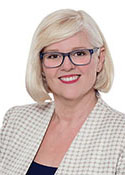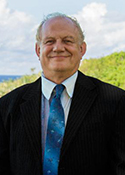McPherson
Margin: Liberal National 13.0%
Region: Southern Gold Coast, Queensland
In a nutshell: The Gold Coast seat of McPherson has been in conservative hands since its creation in 1949, and has been served by a succession of low-key members since 1980.
Candidates in ballot paper order

|
KAREN ANDREWS PETER BURGOYNE SIMON GREEN SANDY GADD ROB JONES |
McPherson is the southernmost coastal electorate in Queensland, covering the Gold Coast from Coolangatta at the New South Wales border north through Tugun and Palm Beach to Burleigh Heads, and extending inland to Robina and Merrimac in the north and the semi-rural Tallebudgera and Currumbin river valleys further south. An area of intensive and ongoing population growth, the most recent redistribution before the 2010 election caused it to lose 5600 voters at the inland end of the electorate to the newly created seat of Wright without it needing any new territory in return. The region is demographically unremarkable on most measures, excepting a lack of ethnic diversity and a slightly above-average median age.
The electorate was created with the expansion of parliament in 1949, prior to which the Gold Coast had been accommodated by Moreton, which was pushed over time into its present position in southern Brisbane. McPherson has since been anchored in the state’s south-eastern corner, at first extending much further inland to include Beaudesert and Warwick. Its inaugural member was Arthur Fadden, a leader of the Country Party who briefly served as Prime Minister after Robert Menzies’ resignation in August 1941. After six weeks in the role he was defeated in parliament when he lost the support of two key independents, although the beleagured United Australia Party continued to support him as Opposition Leader until the 1943 election defeat. Fadden moved to the newly created seat in 1949 after previously serving as member for Darling Downs, which has since been re-named as Groom. He held the seat until his retirement in 1958, at which point he was succeeded by another Country Party member, Charles Barnes.
The rapid development of the Gold Coast changed the electorate’s complexion in the decades following the war, drawing it away from its rural base and towards the coast and weakening its identity as a Country Party stronghold. When Charles Barnes retired in 1972, Liberal candidate Eric Robinson won the seat after narrowly edging out the Country Party candidate in the preference count. The electorate was at the centre of a political controversy in 1978 when it was alleged that Robinson, then a minister in Malcolm Fraser’s government, had sought to influence the electoral redistribution commissioners after they determined to change the electorate’s name to Gold Coast, which under the terms of the coalition agreement would have entitled the National Country Party to contest the “new” seat. A royal commission into the matter cleared Robinson of wrongdoing but found another minister, Reg Withers (who had won fame as the Opposition’s Senate leader during the 1975 crisis), to have acted improperly. This resulted in Withers’ dismissal by Fraser, to the chagrin of many in the Liberal Party. Robinson went on to resign from the ministry the following year over an unrelated falling-out with Fraser.
Robinson died in January 1981 and was succeeded at the ensuing by-election by Liberal candidate Peter White. White won an easy victory with help from Labor preferences over National Country Party candidate Glenister Sheil, who had resigned from the Senate to run at the by-election and would later return to it in 1984. Sheil had won a position in the ministry in 1977 only to lose it before being sworn in for expressing support for South Africa’s apartheid system. Peter White held the seat until his retirement at the 1990 election, by which time the National Party was no longer competitive in the area at the federal level. He was succeeded by John Bradford, who went on to quit the Liberal Party in 1998 to join Fred Nile’s Christian Democratic Party, standing unsuccessfully as its Queensland Senate candidate at the election later that year. The seat then passed on to Margaret May, who won Liberal preselection from a field that included former Brisbane lord mayor Sallyanne Atkinson.
When May announced her retirement ahead of the 2010 election, Liberal front-bencher Peter Dutton sought to move to the seat in preference to his ultra-marginal existing seat of Dickson in Brisbane’s outer north. However, it quickly became apparent that local party operatives who had been jockeying for the succession were not going to be deterred, despite Dutton’s move having the backing of John Howard and then-Liberal leader Malcolm Turnbull. The result was a rebuff for Dutton, who was said to have come within a handful of votes of victory on the first round of the local preselection ballot but was ultimately defeated by Karen Andrews, a Gold Coast businesswoman and chair of the party’s local federal electorate council. The prospect of the party’s state executive intervening by refusing to ratify the result was promptly ruled out amid talk of a potential rebellion in the local party. Dutton was accordingly compelled to remain in Dickson, which he had no trouble retaining amid the much-changed political circumstances which prevailed by the time the election was held.
Karen Andrews picked up successive swings of 1.6% and 2.7% at the 2010 and 2013 election, boosting her margin to its present 13.0%. She won promotion to parliamentary secretary level in November 2014, serving as Assistant Minister for Science since the leadership change in September 2015. Andrews opposed the spill motion against Tony Abbott the previous February, and was also believed to have supported him in the vote in September, unlike most of her Queensland Liberal colleagues.
Analysis by William Bowe. Read William’s blog, The Poll Bludger.


